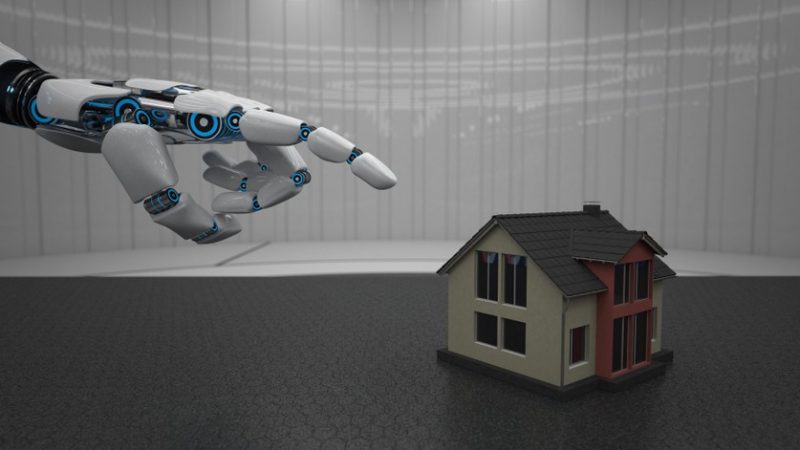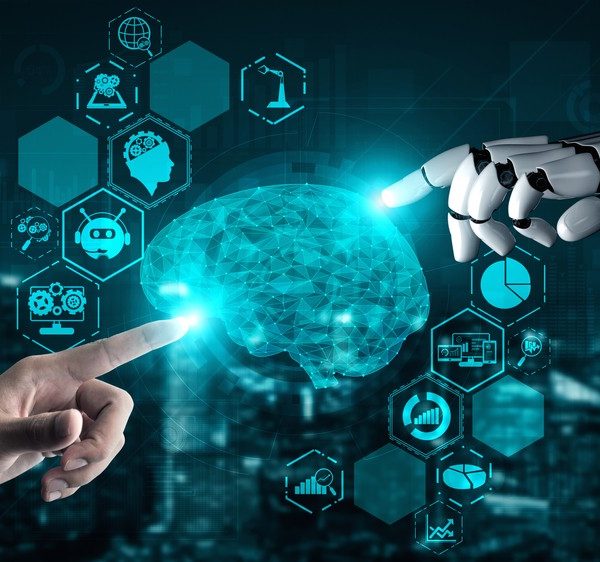
AI in Law Enforcement: Challenges and Opportunities
Several decades ago, the concept of artificial intelligence technology was limited to science fiction movies and novels. However, today, this technology is rapidly permeating all aspects of our lives, including law enforcement. Policing is one area where robots are being employed to monitor and safeguard both low-security locations such as shopping malls, as well as high-security and hazardous locations like power stations and construction sites.
AI technology leverages complex algorithms to analyze vast amounts of data within a shorter timeframe. By learning human behavior patterns, the software also acquires the ability to mimic and predict future actions. As the technology’s accuracy and capabilities continue to grow, it is expected to become even more pervasive within law enforcement.
Experts assert that AI-based smart technologies can help reduce crime rates in cities by up to 40%. Furthermore, artificial intelligence may also reduce emergency service response times by 20 to 35%. Despite these significant benefits of AI in maintaining citizen safety, the technology is not without controversy. Most of the concerns are related to predictive policing and surveillance, according to consultants at Deloitte.
Facial Recognition: The Power and Potential of AI Technology
Facial recognition technology has been making waves in recent years, and it’s not hard to see why. This cutting-edge application of AI technology has revolutionized the way we identify individuals, making it easier than ever before for law enforcement officials to locate suspects and solve crimes. In this article, we’ll take a closer look at how facial recognition works, its various applications, and some of the challenges it presents.
Understanding Facial Recognition Technology
At its core, facial recognition technology relies on algorithms that can identify and analyze unique facial features in a given image or video. By comparing these features to a database of known individuals, the software can quickly and accurately identify a person’s identity.
One of the key benefits of facial recognition technology is its ability to collect and analyze biometric data. This additional layer of information can help improve the accuracy of facial recognition software, making it even more useful in law enforcement applications.
Applications of Facial Recognition Technology
Around the world, law enforcement agencies are using facial recognition technology to help solve crimes and keep communities safe. Here are just a few of the many ways this technology is being used:
- Locating wanted individuals: With facial recognition software, police officers can quickly and easily identify individuals who are wanted for crimes or other offenses.
- Identifying people in images: Facial recognition can help police identify people in images or videos, such as those captured on security cameras.
- Identifying injured or unconscious victims: In cases of traffic accidents or other incidents, facial recognition can help establish the identity of victims who are unable to provide identification.
- Confirming identity: Facial recognition can be used to retrospectively confirm a person’s identity and cross-check it against existing databases.
Read Also: AI in Home Security: Revolution or Big Risk?
Live Facial Recognition Technology
Recent developments in facial recognition technology have allowed for the creation of live facial recognition (LFR) software. This type of software compares real-time camera feeds against watchlists of known criminals, allowing police to quickly identify and locate suspects.
While LFR has enormous potential as a crime-fighting tool, it’s important to note that there are concerns about its use. Some worry that LFR could be used to invade people’s privacy or disproportionately target certain groups.
Challenges and Limitations
As with any new technology, facial recognition presents some challenges and limitations. One of the most significant concerns is the potential for bias in facial recognition software. This bias can stem from a variety of sources, including biased data sets and algorithms that are trained on a limited range of faces.
To address these concerns, it’s important to ensure that facial recognition software is trained on diverse data sets that accurately represent the population. Additionally, there should be guidelines in place to ensure that the software is being used ethically and in a way that respects people’s privacy.
Looking Beyond Facial Recognition: How AI Can Revolutionize Crime Prevention
In the field of law enforcement, identifying wanted individuals has always been a crucial task. With the advancements in technology, artificial intelligence (AI) has been able to improve the process of identifying suspects. However, the potential of AI is not limited to this alone, as it can also play a pivotal role in predicting and preventing crimes.
One of the major advantages of AI software is its ability to analyze vast amounts of data, such as CCTV feeds, and identify trends, behavioral patterns, and correlations that might not be discernible to humans. This level of analysis surpasses what a human can achieve, making AI a powerful tool in law enforcement.
While the analysis of data forms the foundation of AI applications, it is machine learning that enables software to draw human-like conclusions. Machine learning takes time and several iterations before an algorithm can draw meaningful conclusions. However, once the algorithm has learned, it can predict the future with a high degree of accuracy.
Human behaviors are complex and driven by a variety of motives, and AI has the potential to learn and apply all of them. Nevertheless, AI is still playing a supportive role in law enforcement and policing, and is not yet capable of taking over from human officers.
For example, AI software can identify behavioral patterns and make predictions of potential future crimes based on its data analysis. However, relying solely on technology for predictive policing remains controversial, and it is still a matter of debate whether this will become the primary style of policing in the future.
Reducing Police Paperwork: How AI Can Help
Police officers often find themselves bogged down with paperwork following incidents they attend, which takes them off the streets and compromises citizen safety. However, cutting down on case reports can also be problematic as they form the basis of a successful prosecution of a crime. Enter artificial intelligence (AI) technology, which can automatically capture the required data, thus minimizing the time officers devote to reporting.
Recording data through AI technology not only reduces the amount of time required, but it also helps minimize the potential for human error or bias in a report. Officers may still have to review and annotate the data that has been collected, but they will likely spend much less time than they would have needed to complete the entire process by hand.
Smart Knowledge Sharing of Incidents
Police incident reports used to gather dust in archives where different departments kept hard copy records of crime reports and investigations. However, AI technology, combined with collaborative software, makes it easier to share information between departments and agencies.
Sharing information often means accessing different databases and comparing their contents. This would take hours, if not days, if done by a single officer or even a team of officers. However, AI can easily cross-reference the contents of several databases and share its conclusions, providing valuable insights and saving time.
Police forces not only gain access to more information, but they also benefit from having an invaluable “team member” who digests vast quantities of data and draws human-like conclusions from it. Smart knowledge sharing of this type benefits each of the involved police forces and law enforcement agencies.
Building Trust and Confidence in AI
Successful use of artificial intelligence technology in policing is based on confidence and mutual trust. This trust needs to exist between different arms of law enforcement when it comes to sharing data. It is also required between a police force and its community.
To build trust, it is important to show transparency in how AI technology is used and how data is collected, stored, and analyzed. Police forces must ensure that AI technology is used ethically and with the highest regard for privacy and civil liberties.
Robots Revolutionizing Security: From Patrolling to Crime Fighting
Robots are no longer just a thing of the future; they are here and are already revolutionizing the way we approach security. With their advanced capabilities, they are able to improve, monitor and secure low-risk and high-risk areas such as shopping malls, power grids, and public parks. In this article, we will discuss the different ways robots are changing the game in the security industry.
Patrolling and Monitoring with Robots
Robots are being utilized to reach areas that are either inaccessible or not conducive to human patrolling or monitoring. These machines are being deployed in areas that are considered high risk, such as conflict zones and crime-ridden neighborhoods, to enhance security measures. They are equipped with advanced cameras and sensors that enable them to detect any unusual activity or behavior.
Read Also: AI in Home Robots: How is it Used?
Drones for Remote Monitoring and Inspection
Drones are also playing a crucial role in security, especially in remote monitoring and inspection. With their aerial capabilities, they can inspect structures that are difficult to reach from the ground. They can provide remote monitoring and inspections without human intervention, which is particularly useful in dangerous or hazardous environments.
In fact, researchers at the University of Maryland and the University of Zurich have developed a drone that can detect and dodge objects thrown at it. Equipped with event cameras and a sonar system, this drone can be used in high-risk environments without putting police officers in harm’s way.
Robotic Police Force
The use of robots in law enforcement is also becoming more prevalent. The Huntington Park Police Department in California has recently unveiled its latest recruit, a 400-pound robot known as HP RoboCop. This robot has been patrolling Salt Lake Park and has already helped make arrests. The potential of having a fleet of robots working in unison to lay out a security blanket around a city is enormous. These machines can reduce the need for human intervention, allowing for a more efficient and effective approach to fighting crime.
In fact, HP RoboCop has helped the police department round up criminals with evidence in just 6-8 hours! The possibilities for this technology are endless and could potentially lead to a future where crime is significantly reduced.
Conclusion
In order for smart and innovative police services to fulfill their promise in the community, a crucial element is trust and acceptance. If citizens feel that they are constantly under surveillance without any assurance of their safety, they will not appreciate the benefits of AI technology in policing.
As artificial intelligence technology continues to advance and predictive policing becomes more prevalent, it becomes even more critical to build trust within the community. Only when trust and technology are seamlessly integrated will AI reach its full potential in policing.
To summarize, trust and acceptance are necessary for effective policing using AI. The community’s trust in the technology is crucial for its success, and without it, the benefits of AI in policing cannot be fully realized.























